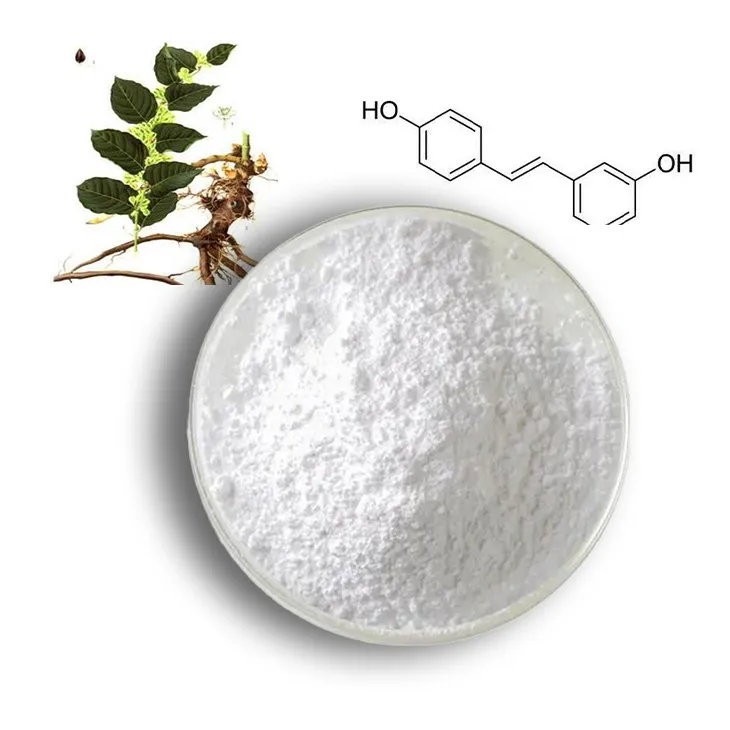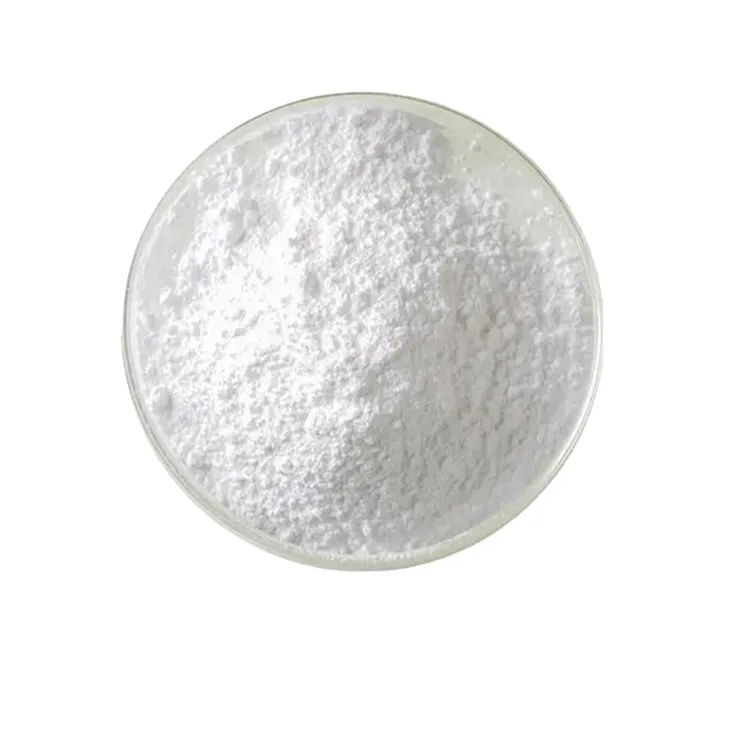- 0086-571-85302990
- sales@greenskybio.com
Resveratrol Extraction from Peanuts: A Synthesis of Current Practices and Future Directions
2024-08-13

1. Introduction
Resveratrol is a phenolic compound that has attracted significant attention in recent years due to its diverse health - promoting properties. It has been associated with antioxidant, anti - inflammatory, and anti - cancer activities, among others. Peanuts are a potential source of resveratrol, and extracting this compound from peanuts has become an area of active research. This article aims to provide a comprehensive overview of the current extraction methods, their efficiencies, limitations, and future research directions in the context of Resveratrol extraction from peanuts.

2. Current Extraction Methods
2.1 Solvent Extraction
Solvent extraction is one of the most commonly used methods for Resveratrol extraction from peanuts.
- Organic solvents: Organic solvents such as ethanol, methanol, and ethyl acetate are often used. For example, ethanol has been shown to be effective in extracting resveratrol from peanut skins. The process typically involves soaking the peanut material (such as skins or whole peanuts) in the solvent for a certain period, followed by filtration and evaporation to obtain the Resveratrol extract.
- Advantages: It can achieve relatively high extraction yields, especially when optimized extraction conditions are used. The use of organic solvents allows for the extraction of a wide range of phenolic compounds, including resveratrol.
- Limitations: However, there are several drawbacks. The use of organic solvents can be costly, and they may pose environmental and safety concerns. Additionally, some solvents may also extract other unwanted compounds along with resveratrol, which may require further purification steps.
2.2 Supercritical Fluid Extraction (SFE)
Supercritical fluid extraction has emerged as an alternative extraction method.
- Principle: In SFE, a supercritical fluid, typically carbon dioxide (CO₂), is used as the extraction solvent. CO₂ is in a supercritical state, which has properties between those of a liquid and a gas. It can penetrate the peanut matrix effectively and selectively extract resveratrol.
- Advantages: This method is considered more environmentally friendly compared to traditional solvent extraction as CO₂ is non - toxic, non - flammable, and easily removable. It also offers better selectivity, which can result in a purer resveratrol extract.
- Limitations: The main limitation is the high cost associated with the equipment required for supercritical fluid extraction. The extraction process also requires precise control of pressure and temperature conditions to achieve optimal results.
2.3 Microwave - Assisted Extraction (MAE)
Microwave - assisted extraction is another technique used for resveratrol extraction.
- Mechanism: Microwave energy is used to heat the peanut sample and the extraction solvent rapidly. This causes the cell walls to rupture more easily, facilitating the release of resveratrol into the solvent.
- Advantages: It can significantly reduce the extraction time compared to traditional solvent extraction methods. For example, extraction times can be reduced from several hours to just a few minutes. It also has the potential to increase the extraction yield.
- Limitations: However, the extraction efficiency can be affected by factors such as microwave power, extraction time, and solvent type. Inappropriate settings may lead to the degradation of resveratrol or the extraction of unwanted compounds.
2.4 Ultrasound - Assisted Extraction (UAE)
Ultrasound - assisted extraction is based on the use of ultrasonic waves.
- How it works: Ultrasonic waves create cavitation bubbles in the extraction solvent. When these bubbles collapse, they generate high - pressure and high - temperature micro - environments that can disrupt the peanut cells and enhance the extraction of resveratrol.
- Advantages: UAE is a relatively simple and cost - effective method. It can improve the extraction efficiency and reduce the extraction time. It is also suitable for large - scale extraction in some cases.
- Limitations: Similar to other extraction methods, the extraction yield and quality can be influenced by various factors such as ultrasound power, frequency, and extraction time.

3. Efficiency and Limitation Comparison
3.1 Efficiency Comparison
- Solvent extraction can achieve high yields under optimal conditions, but it often requires long extraction times. For example, when using ethanol as a solvent, extraction times can range from several hours to days depending on the peanut material and extraction conditions.
- Supercritical fluid extraction offers good selectivity and can produce relatively pure resveratrol extracts. However, the extraction efficiency may be lower compared to solvent extraction in some cases, especially when dealing with low - resveratrol - content peanuts.
- Microwave - assisted extraction and ultrasound - assisted extraction both have the advantage of reducing extraction time. MAE can be extremely fast, but the yield may not always be as high as solvent extraction. UAE generally has a good balance between extraction time and yield, but it may not reach the maximum yield achievable by solvent extraction under the best conditions.
3.2 Limitation Comparison
- Solvent extraction has environmental and safety concerns related to the use of organic solvents, as well as the need for purification steps to remove unwanted compounds.
- Supercritical fluid extraction is costly due to the expensive equipment required. It also requires strict control of operating conditions.
- Microwave - assisted extraction may cause degradation of resveratrol if the microwave power or extraction time is not properly controlled.
- Ultrasound - assisted extraction is also affected by various factors, and improper settings can lead to sub - optimal extraction results.

4. Emerging Trends
4.1 Combined Extraction Methods
One emerging trend is the use of combined extraction methods.
- For example, combining microwave - assisted extraction with solvent extraction. Microwave - assisted extraction can be used first to quickly rupture the cell walls of peanuts, followed by solvent extraction to further extract resveratrol. This combination can potentially increase the extraction yield while reducing the overall extraction time.
- Another example is the combination of ultrasound - assisted extraction and supercritical fluid extraction. UAE can be used to pre - treat the peanut material to enhance the accessibility of resveratrol, and then SFE can be employed to obtain a high - quality, pure resveratrol extract.
4.2 Green Solvents
There is also an increasing interest in the use of green solvents for resveratrol extraction.
- Ionic liquids: Ionic liquids are considered as potential green solvents. They have unique properties such as low volatility, high solubility, and tunable selectivity. Some studies have explored the use of ionic liquids for resveratrol extraction from peanuts, and initial results show promising extraction efficiencies.
- Deep eutectic solvents (DES): DES are another type of green solvent. They are formed by mixing two or more components that can form a eutectic mixture. DES have been investigated for their ability to extract resveratrol from peanuts. They offer the advantages of being relatively inexpensive, biodegradable, and having low toxicity.

5. Future Research Directions
5.1 Optimization of Extraction Conditions
Future research should focus on further optimizing the extraction conditions for each method.
- For solvent extraction, this includes finding the optimal solvent - to - sample ratio, extraction time, and temperature. For example, different peanut varieties may require different extraction conditions, and research should be carried out to determine the best conditions for each variety.
- In supercritical fluid extraction, more research is needed to optimize the pressure, temperature, and flow rate of CO₂ to improve the extraction efficiency and reduce costs.
- For microwave - assisted and ultrasound - assisted extraction, the optimization of power, frequency, and extraction time is crucial to achieve the highest extraction yield and quality.
5.2 Novel Extraction Technologies
The development of novel extraction technologies is another area of future research.
- Pulsed electric field (PEF) extraction: PEF is a non - thermal technology that uses short - duration, high - intensity electric fields to disrupt cell membranes. It has been shown to be effective in enhancing the extraction of various compounds from plant materials. Research on its application in resveratrol extraction from peanuts could potentially lead to a more efficient and gentle extraction method.
- Enzyme - assisted extraction: Enzymes can be used to break down the cell walls of peanuts more specifically. For example, cellulase and pectinase enzymes can be used to hydrolyze the cellulosic and pectic components of the peanut cell walls, respectively, making it easier to extract resveratrol. This method has the potential to improve extraction yields while maintaining the integrity of resveratrol.
5.3 Bioavailability and Functional Studies
Although resveratrol has been shown to have many health - promoting properties, its bioavailability is still a concern.
- Future research should focus on studying the bioavailability of resveratrol extracted from peanuts. This includes investigations into how different extraction methods may affect the bioavailability of resveratrol. For example, does the use of a particular solvent or extraction technology result in a form of resveratrol that is more easily absorbed by the body?
- Additionally, more functional studies are needed to further elucidate the health - promoting effects of peanut - derived resveratrol. These studies could include in - vivo and in - vitro experiments to explore its antioxidant, anti - inflammatory, and anti - cancer mechanisms in more detail.
6. Conclusion
Resveratrol extraction from peanuts is an area of great potential. Current extraction methods have their own efficiencies and limitations. Emerging trends such as combined extraction methods and the use of green solvents show promise for improving the extraction process. Future research directions, including the optimization of extraction conditions, the development of novel extraction technologies, and bioavailability and functional studies, will play a crucial role in enhancing the extraction and utilization of resveratrol from peanuts. By further exploring these areas, we can look forward to more efficient and sustainable ways to obtain this valuable compound from peanuts for various applications in the fields of health, food, and pharmaceuticals.
FAQ:
What are the main extraction methods for resveratrol from peanuts?
There are several main extraction methods for resveratrol from peanuts. One common method is solvent extraction. Organic solvents such as ethanol are often used to dissolve resveratrol from peanut materials. Another method is supercritical fluid extraction, which uses supercritical fluids like carbon dioxide under specific conditions to extract resveratrol. Maceration is also a traditional approach where the peanut sample is soaked in a solvent for a certain period to obtain the compound.
What are the efficiencies of the current resveratrol extraction methods from peanuts?
Solvent extraction can achieve a relatively high extraction yield, especially when using appropriate solvents and extraction conditions. However, it may also extract other unwanted compounds simultaneously. Supercritical fluid extraction has high selectivity, which means it can target resveratrol more precisely and often results in a purer extract. Its efficiency can be good in terms of quality but may have limitations in large - scale production due to equipment cost. Maceration is a simple method but generally has lower efficiency compared to the other two methods as it may not fully extract all the available resveratrol in a short time.
What are the limitations of the existing resveratrol extraction methods from peanuts?
For solvent extraction, the main limitation is the potential contamination by the solvent residues, which may pose a risk to human health if not removed completely. Also, the extraction process may be time - consuming and energy - intensive. In supercritical fluid extraction, as mentioned before, the high cost of equipment is a significant limitation, restricting its widespread application in small - scale or less - funded laboratories. Maceration has a long extraction time and may not be able to extract resveratrol efficiently from all parts of the peanut, leading to lower overall yields.
What are the emerging trends in resveratrol extraction from peanuts?
One emerging trend is the use of green solvents in extraction. These solvents are more environmentally friendly and less toxic compared to traditional organic solvents. Another trend is the combination of different extraction methods to optimize the extraction process. For example, combining microwave - assisted extraction with solvent extraction can potentially increase the extraction efficiency by disrupting the cell walls of peanuts more effectively. There is also a growing interest in using enzymatic pre - treatment before extraction to enhance the release of resveratrol from peanut matrices.
What are the future research directions for resveratrol extraction from peanuts?
Future research could focus on developing more efficient and cost - effective extraction methods. This may involve exploring new solvent systems or extraction techniques. Another direction could be to study the genetic factors of peanuts to identify varieties with higher resveratrol content and better extractability. Additionally, research on improving the stability of resveratrol during extraction and storage is also crucial to ensure its effectiveness in various applications.
Related literature
- Resveratrol in Peanuts: Occurrence, Bioavailability, and Health - Promoting Effects"
- "Optimization of Resveratrol Extraction from Peanuts Using Response Surface Methodology"
- "A Comparative Study of Different Extraction Methods for Resveratrol from Peanut Skin"
- ▶ Hesperidin
- ▶ citrus bioflavonoids
- ▶ plant extract
- ▶ lycopene
- ▶ Diosmin
- ▶ Grape seed extract
- ▶ Sea buckthorn Juice Powder
- ▶ Beetroot powder
- ▶ Hops Extract
- ▶ Artichoke Extract
- ▶ Reishi mushroom extract
- ▶ Astaxanthin
- ▶ Green Tea Extract
- ▶ Curcumin Extract
- ▶ Horse Chestnut Extract
- ▶ Other Problems
- ▶ Boswellia Serrata Extract
- ▶ Resveratrol Extract
- ▶ Marigold Extract
- ▶ Grape Leaf Extract
- ▶ blog3
- ▶ blog4
- ▶ blog5
-
What are extracts made of?
2024-08-13
-
Extract Usage: A Comprehensive Guide
2024-08-13
-
Are plant extracts good for you?
2024-08-13
-
What are plant-based extracts?
2024-08-13
-
What Is a Plant Extract? A Deep Dive
2024-08-13
-
Grapefruit Seed Extract Powder
2024-08-13
-
Angelica sinensis extract
2024-08-13
-
Propolis Extract Powder
2024-08-13
-
Mangosteen extract powder
2024-08-13
-
Milk Thistle Extract
2024-08-13
-
Longan Extract
2024-08-13
-
Astaxanthin
2024-08-13
-
Red Vine Extract
2024-08-13
-
Rosemary extract
2024-08-13
-
White Willow Bark Extract
2024-08-13































